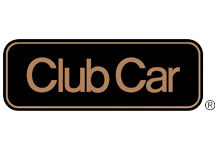You often hear the adage, “Change is inevitable” That being said, it is most often the case that we are invariably concerned with how much change, and what will be the speed of the anticipated change. The “how much” and “speed” are at the top of the list when describing the 2024 PGA Show and comparing it to 2023.
In this context the following Important topics are analyzed:
- New market entrants (OEMs) and their impact on the market: Will it be sustainable?
- Broadening the market on the strength of greater product variety;
- Shifting the mainstream market from golf to short distance driving—groundbreaking vehicles;
- The promise of two key technologies—semi-autonomous vehicles and wireless charging;
- Profiling the Tomberlin ENGAGE and the Voyager start-up.
In addition to these topics, GCA singles out two makes and models that best attest to the direction of the market. The one, Tomberlin’s Emerge exemplifies the essence of diversified consumer use of the GCT vehicle; and the other, Adventure Manufacturing’s Voyager product line, a start-up typifying the spirit of the industry’s new creative energies.
New entrants dominate the Show
In terms of numbers, the 2024 Show saw an order of magnitude jump in golf car-type (GCT) vehicle OEMs with booths and pavilions. In 2023 there were about a half-dozen OEMs present. In 2024 that number at least tripled. In fact, it was pretty difficult to move from one aisle on the floor to another without coming across yet another newbie. So, the question arises, is this surge of new competitors an overreaction to the leap in market demand which occurred during the COVID epidemic? Or…
What about parts availability and service?
An obvious and key question is, can the bevy of new entrants provide parts and service for a sustainable market presence? Time will tell, of course. Here are a few indicators of the outcome:
- Most of the new models on the floor featured the latest upgrades and automotive-type accessories, suggesting that production at scale is available from suppliers;
- No two brands are exactly alike: While appearances suggest close resemblance, every brand has its nuances and even peculiarities under hood. New entrants will invariably have to incur the expense of training service personnel to adequately tend to the repair and part replacement needs of their vehicles. This expense goes right to the bottom line and weakens the competitive position of the new OEMs. Established players definitely have an advantage here. Thus, timely vehicle service is a likely headwind for new entrants.
Market impact of new entrants
What will be the likely impact of this expansion on the supply side of the market? The basic model of demand and supply from Econ 101 is that prices will decrease as quantity demand increases. Thus, a two-edged sword is in play: on the one hand the market expands, but along with it, the burden of lower margins.
In informal conversations with a number of company reps at the Show, the concern voiced was that there would be “a race to the bottom” in terms of price—in other words, price war. Conversely, however, there are a number of qualifications to this scenario. In particular:
Much greater product variety – The market is no longer a “commodity” golf car market, as it tended to be a decade or so ago. We now have a market rich in a variety of models and catering to a broader consumer base—ranging from those who are price-sensitive to those who indulge in all the trimmings and the larger battery packs.
Shift in the mainstream market to accommodate short distance driving – Consumer use of GCT vehicles is also diversifying and growing. The concept of “short distance driving” encompasses this phenomenon. While the commodity, low-priced golf car is still relevant, particularly in golf-oriented communities, GCT vehicles are taking to public roads in greater numbers and the stimulus and excitement of a new and practical way to get from point A to point B has local area traffic regulations under pressure to accommodate and change.
It is well-known by now that most driving trips are 5 miles or less. The following is excerpted from a news article distributed through the U.S. Department of Energy: “A research study for the Bureau of Transportation Statistics focused on the number of daily trips taken in the United States. In 2021, 52% of all trips, including all modes of transportation, were less than three miles, with 28% of trips less than one mile. Just 2% of all trips were greater than 50 miles.” (Note: A trip was defined as a movement that includes a stay of longer than 10 minutes at a location away from home.) Emphasis added.
Companies that are tuned in to the frequency of short distance driving will focus both product development and marketing strategies to build their brand and market share.
Key technologies that will make an impact
Two important technologies were on display at this year’s Show, both of which will enhance the notion of short distance driving. The first to note is the second appearance of Carteav from Israel. Carteav has teamed with PILOTCAR, a manufacturer from Turkey, with U.S. headquarters in Ft. Myers, FL. PILOTCAR’S LSV model provides the autonomous vehicle platform, with a fleet management system, a cloud-based reservation program, and integrated wireless charging to complete the full set of components.
Avinoam Barack, company CEO, explained that the target markets are resorts, gated communities, retirement and assisted living villages, industrial/business campuses, and educational campuses. The structural aspects of these facilities means they are or can be geo-fenced with designated sites for pick-up and destination. The reservation system assures timely arrival of vehicles that are individually on call. The actual mapping to provide geofencing and site locations takes only a day, according to company literature.
Carteav wasn’t the only company bringing an autonomous system to the Show. T-Buggy, a division of the Oribay Group Automotive, based in San Sebastian, Spain exhibited an autonomous golf car, featuring the components of its self-driving system. The components include a LiDAR system for obstacle detection and environment scanning, ADAS cameras, including a backup camera and parking assistance, as well as cloud infotainment and fleet management systems.
As the targeted markets expand and geo-fencing becomes a generalized attribute of local community transportation networks, Carteav’s autonomous driving system and others should emerge as reliable and efficient components of the short distance driving market. Expect to see more of these systems on display in future PGA Shows.
Wireless charging, a possible game changer
WiTricity develops and produces wireless charging systems for the automotive industry. The company exhibited its wireless system for golf cars at both the Consumer Electronics Show in Las Vegas this year, as well as the PGA Show. Justin Scalzi, Vice President of Marketing was clearly delighted to announce that his product has been adopted both by ICON EV and E-Z-GO.
Asked whether the WiTricity system would be available for on-the-go, opportunity charging at supermarkets, convenience stores, and similar shopping sites, Mr. Scalzi responded, “that is our goal.” Widely available wireless charging could be a significant game changer for GCT vehicles in the role of short distance driving conveyance. Such systems could mean the end of distance anxiety, which has plagued product and market development in the past.
LSV vs. PTV: In what direction is the market going?
A low-speed vehicle (LSV) is a street legal, i.e., certified to meet NHTSA specifications for use on public roads designated with speed limits of 35 mph. and under. This category has been around for a while of course, but the big three has been somewhat reluctant to embrace the concept either in marketing or product development. Companies like Tomberlin, Star EV, ICON and Bintelli, on the other hand, aggressively promote LSV certification throughout their product lines.
It should be noted that Club Car and E-Z-GO do have their LSV models, but in the case of Club Car, the sole LSV in their consumer channel is the CRU, introduced at the 2023 Show, while E-Z-GO features only the Liberty with an LSV package. Yamaha has no LSV models, as yet.
Automotive upgrades and accessories point to on-road use
GCT vehicles have been consistently upgraded over the years and those on display at the PGA Show this year were no exception. The quintessential example of the latest avatars in upgrades at the Show was Tomberlin’s ENGAGE golf car. Described by Kurt Meyer, Product Business Development Manager as, “An automobile that can be used for golf,” He also noted that the vision for the ENGAGE is that of a “lifestyle vehicle”. The list of upgrades in the ENGAGE bears out this idea. For example:
- 7-inch touch screen infotainment system with Android Auto/Apple Car Play;
- Evolve 210 Amp battery package, as standard (80 mile range capability);
- 450 amp AC controller with a 17 hp electric motor;
- LED high/low beam lighting, with running lights and turn signals;
- Rear view camera;
- Tomberlin 360 on-board connectivity system;
- Passenger controlled heating and ventilation system;
- High grade vinyl, cool touch seats;
- Integrated headliner with dome, map, and rear lighting;
- Column mounted, eyes forward LCD instrument panel;
- Multi-function automotive style controls on the steering column;
- Electric power steering;
- Wireless cell phone charger with driver and passenger USB ports;
- Patented illuminated side rocker panels for vehicle visibility at night.
Actually, the list of upgrades continues, and it goes without saying that the ENGAGE is LSV compliant, is lifted with designer wheel rims and automotive radial tires. The Tomberlin 350 app continuously monitors the location of the vehicle and a unique ignition key with a locking steering column prevents joy rides and theft. This is not an unimportant detail in some neighborhoods and as short distance driving goes beyond the gated community.
It should be noted that the upgrades featured in the ENGAGE are not necessarily unique, because the many of the numerous GCT vehicle exhibitors had similar components. What is unique about the Tomberlin product is its entire, full-blown package of upgrades and the attention to detail that went into the total ENGAGE design. Just to cite one out of many examples that could be noted: The automotive-style side mirrors, where the descriptor “automotive style” is not a throwaway embellishment. Why? Because they are rigidly attached to the vehicle frame and when retracted from a fold-back position, there is no need to readjust the mirror. It is in place with same vision perspective as before the fold-back. While most of the GCT vehicles at the Show had side mirrors, not a one of them had this very convenient attribute.
If any GCT vehicle is ready for the public roads and thoroughfares, and ready to move into the short distance driving market, it is the ENGAGE.
The Voyager Start-Up
The parade of new vehicles on exhibit at the 2024 PGA Show was remarkable, as noted above. An aspect of this entry by start-ups, meaning a new brand and at the point of beginning what the owners hope will be full market development. In evaluating individual companies that make up this collective of start-ups—which would include the new brands entering the market over the past two years or so—an assessment of the management team is essential. And in addition, what is the team’s vision for market development and success.
GCA interviews key principals – GCA had the opportunity to interview two members of one such team, Andy and Ashlee Ilg of Adventure Manufacturing and producers of the Voyage line of GCT vehicles. Andy brings to the company unique design and engineering experience from two decades in the aeronautical industry. (Andy earned his Bachelor of Science in Aerospace Engineering, with a focus on Propulsions, from Embry-Riddle Aeronautical University in Daytona Beach, FL.)
Clear indicators that the company has an excellent chance for growth and success include the following:
- Andy’s 20 years of experience building, repairing, and customizing GCT vehicles in the heart of GCT country, namely Peachtree City;
- Long term experience of Andy and Ashlee as owners of the Big O Golf Carts dealership in Peachtree City;
- Lessons learned in experiencing and evaluating new brands in the market during and in the wake of COVID
The key lesson learned was that while the new entries had eye appeal and a variety of upgrades, dealer support for parts, warranties, and servicing were sorely lacking. Andy’s biggest frustration point was the lack of manufacturer and warranty support for dealers. “I wasn’t looking for perfection with the new carts,” he said, “but I was expecting the manufacturers to stand behind their product and provide support. The lack of accountability from many of the new manufacturers was very disappointing.”
Seeing these gaps in follow-through suggested to Andy an opportunity for his own market entry with a clear appeal to what dealers wanted and needed, and a solid commitment to long term, sustainable support for the network to be.
Building the team that drives the Voyager GCT vehicles – Once Andy and Ashlee decided to build their own, they proceeded to build their present team. The story is the quintessential tale of American entrepreneurship and resourcefulness. Andy first called his friend and mentor, Jeff Hathaway, and the two men, along with their wives and Jeff’s son Lucas, shook hands on the project. In the Fall of 2022, Voyager Electric Vehicles was born.
Jeff, who is now Director of Sales, has a background in the automobile industry and over 35 years in the entrepreneurial world, brings a dynamic perspective to the team. He uses his sales experience and solution mindset to not only build the Voyager brand, but even more importantly, to support the Voyager dealers in their sales efforts.
Lucas, who has one of the top insurance agencies in the country, is an entrepreneur to the core. His strength is creating systems and building relationships everywhere he goes. As the Director of Operations for Voyager, he is at the forefront of building long-term win-win solutions with our dealer network.
Vision for the business development – Voyager has a history of starting small but with applied talents growing larger. Given the location in Peachtree City the opportunity to put the product line, consisting presently of four models, is very likely to be in the forefront of the developing short distance driving market, extending beyond to a national market. It will be interesting to see where the company stands come the 2025 PGA Show.
Trends and developments to watch in 2024
The 2024 PGA Show, as well as current industry and market trends indicate that 2024 will be a momentous year of flux and change. Here are the on-going developments that bear monitoring:
- Emergence of short distance driving and the GCT vehicles best suited for this purpose;
- With the critical need for backup servicing, watch for the development of specialized GCT servicing companies, aping the independent mechanics shops for conventional vehicles—but on a national scale;
- A reshoring of critical parts manufacturing to fend off supply chain uncertainties and the application of robotic technologies to the process;
- A possible shake-out of weaker competitors, bringing supply and demand into a more sustainable balance.
Authored by Stephen Metzger, small vehicle industry expert and longtime contributor to Golf Car Advisor, this new analysis of industry trends is a must-read for developing market strategies and product development. Stephen will be attending the 2024 PGA Show, and if you would like to talk to him there, or find out more about the SVR market analysis, you can contact him at: [email protected]






















